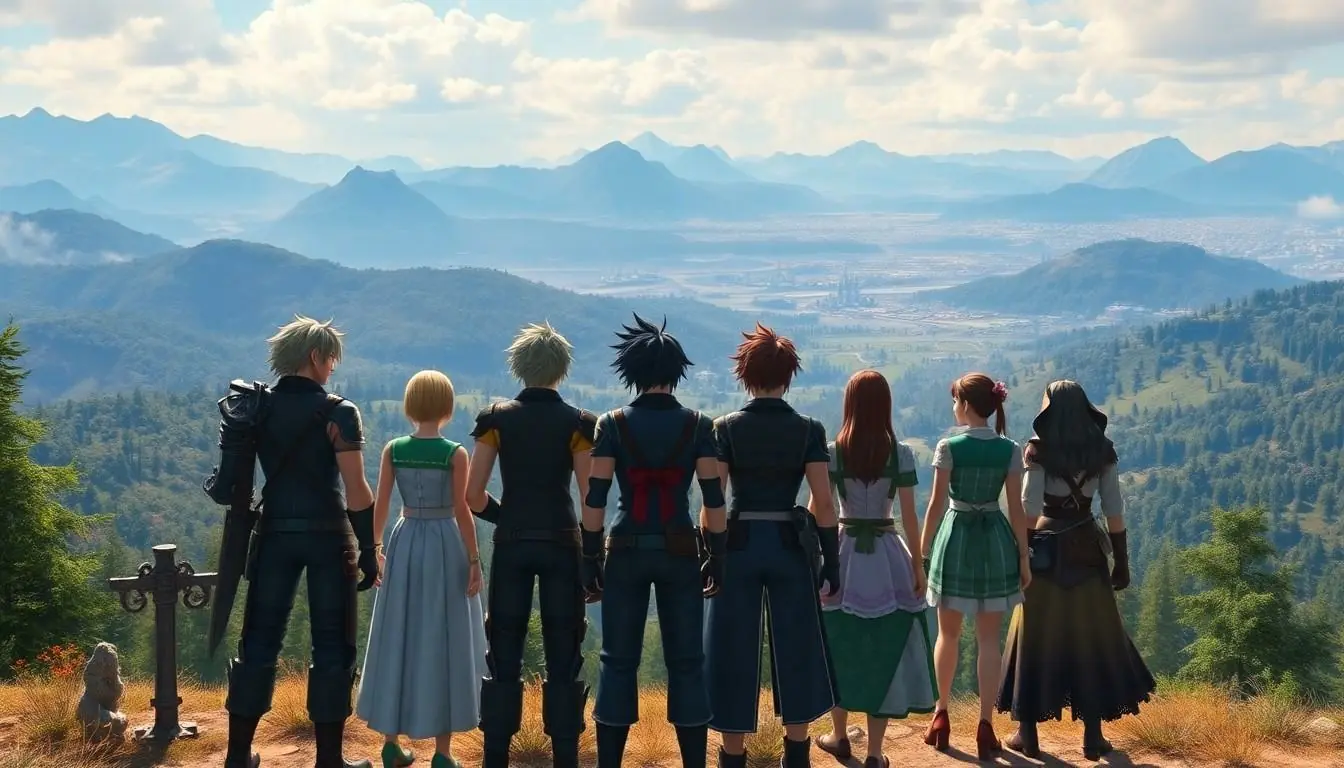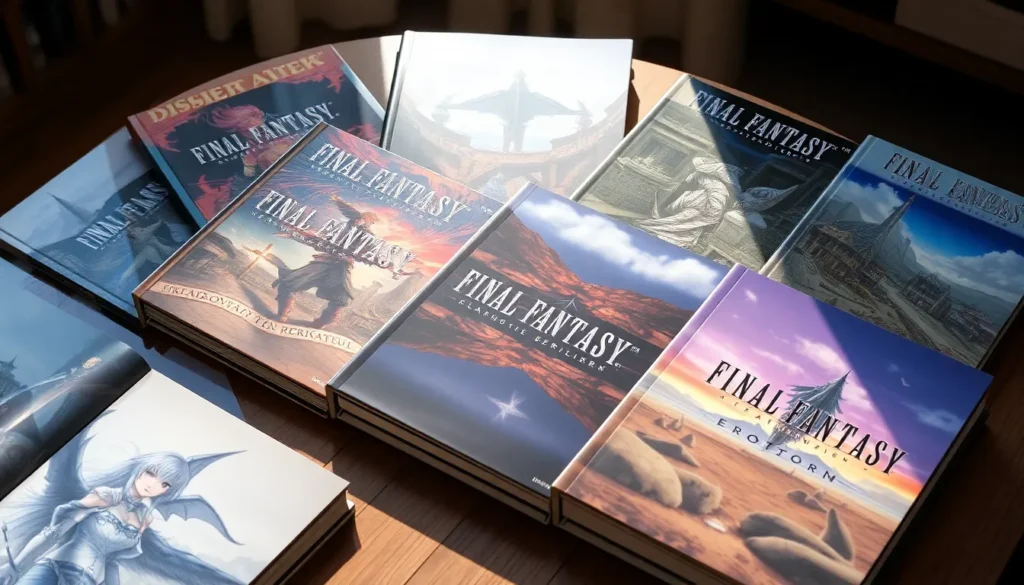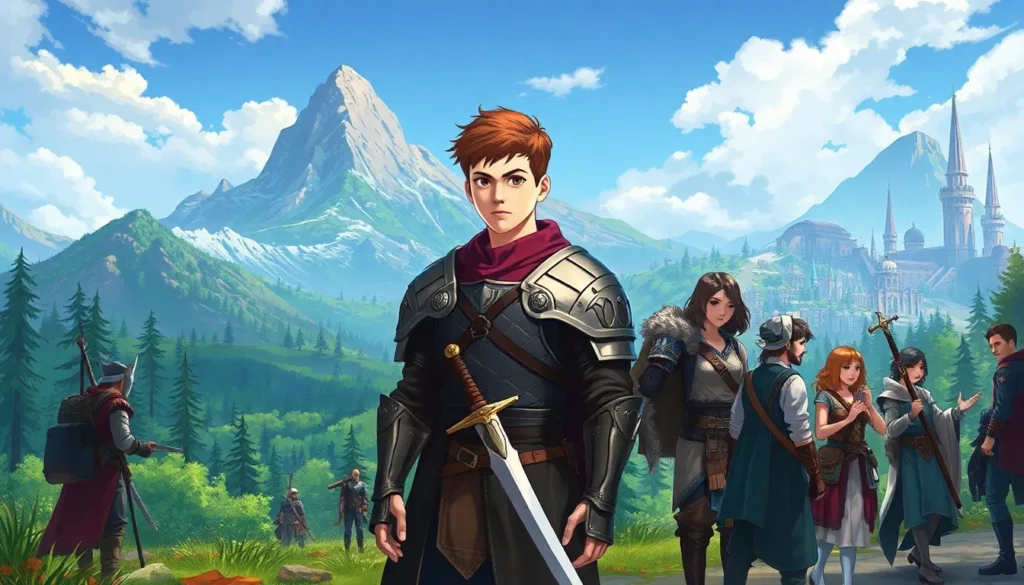In the realm of gaming, few titles have left as big a mark as Final Fantasy on the original PlayStation. Released in the mid-’90s, this epic saga whisked players away to a world filled with magic, monsters, and melodrama. Who wouldn’t want to save the world while sporting a spiky hairdo and wielding a sword bigger than their character?
With its unforgettable characters and groundbreaking storytelling, Final Fantasy didn’t just set the stage for future RPGs; it practically built the stage, designed the lights, and cast the lead. Whether you were drawn in by Cloud’s brooding charm or Tifa’s fierce loyalty, this game had something for everyone. Buckle up as we dive into the enchanting universe of Final Fantasy on the PS1, where nostalgia meets adventure in a way that still resonates today.
Table of Contents
ToggleOverview of Final Fantasy PS1
Released in 1997, Final Fantasy for the PlayStation marked a pivotal moment in gaming history. This installment introduced players to the world of Gaia, a setting rich with diverse landscapes and intriguing lore. Characters like Cloud Strife and Tifa Lockhart emerged as unforgettable heroes, captivating fans with their depth and complexity.
The game’s turn-based combat system revolutionized traditional RPG mechanics. Players engaged in strategic battles, utilizing a blend of magic, physical attacks, and unique abilities. This emphasis on strategy contributed to the game’s critical acclaim and commercial success, selling over 9 million copies worldwide.
Narrative depth characterized Final Fantasy PS1, featuring a storyline filled with themes of friendship, sacrifice, and heroism. Players navigated through various emotional arcs, from the struggles of main characters to the challenges posed by antagonists like Sephiroth. Unforgettable moments anchored the plot, making players invest emotionally in the outcome.
Visuals showcased the advanced graphical capabilities of the PlayStation, featuring detailed character models and vibrant environments. Cinematic cutscenes enhanced the storytelling, immersing players in the dramatic journey. The use of pre-rendered backgrounds created a beautifully crafted visual experience, setting a new standard for the genre.
Sound design played a critical role in the game’s atmosphere. The iconic score, composed by Nobuo Uematsu, featured memorable melodies that resonated with players long after the game ended. This musical legacy contributed to the franchise’s enduring popularity.
Overall, Final Fantasy PS1 significantly impacted the RPG landscape, influencing subsequent titles. Its blend of engaging gameplay, rich storytelling, and memorable characters established a blueprint for future role-playing games, ensuring its place in gaming history.
Gameplay Mechanics
Final Fantasy on the PS1 features innovative gameplay mechanics that contributed to its lasting legacy. The combination of a deep narrative and engaging systems immerses players within its world.
Combat System
The combat system utilizes a turn-based format, allowing players to make strategic decisions during battles. Each character possesses unique abilities and classes, enhancing tactical depth. Players can customize their party with diverse skills and spells, creating various combinations to address different challenges. Special limits activate during combat, providing powerful attacks that can turn the tide in battle. This approach to combat encourages foresight and resource management, rewarding thoughtful planning and execution.
Exploration and World Design
Exploration within Final Fantasy takes players through diverse environments that convey the richness of Gaia. Landscapes vary from bustling cities to vast wilderness and hidden dungeons. The design fosters a sense of discovery, with numerous side quests and secrets enriching the overall experience. Players find engaging NPCs who offer lore and context, enhancing immersion. Ultimately, the world’s design interconnects areas, forming a coherent universe that invites thorough exploration and replayability.
Storyline and Characters
Final Fantasy for the PS1 features a captivating narrative that immerses players in a rich fantasy world. Themes of friendship, sacrifice, and heroism resonate throughout the characters’ journeys.
Main Plot Synopsis
A group known as AVALANCHE, led by Cloud Strife, fights against the Shinra Electric Power Company, which exploits the planet’s resources. The plot evolves as the team uncovers an ancient threat linked to Sephiroth, a former SOLDIER with plans to harness the planet’s life force. Major events include battles against formidable foes and personal crises that challenge the group’s unity. As they explore the vast world of Gaia, friendships deepen, and alliances form. Players navigate through various twists and struggles, ultimately striving to save their planet.
Character Development
Each character in Final Fantasy undergoes significant growth. Cloud starts as a conflicted hero looking for purpose, shaped by his past experiences. Tifa serves as his steadfast friend, struggling with her feelings while fighting for their shared goals. Barret Wallace, the group’s leader, embodies resolve and passion for protecting the planet, showcasing growth as he confronts personal demons. Aerith Gainsborough introduces a sense of mystery and vulnerability, providing emotional depth to the narrative. Other characters like Red XIII and Vincent Valentine add layers to the storyline with unique backgrounds and motivations. These character arcs enhance the emotional stakes, drawing players deeper into the game.
Graphics and Sound Design
Final Fantasy on PS1 features striking graphics and a memorable musical score, enhancing player immersion and engagement.
Visual Presentation
Enhanced graphics showcase the PlayStation’s capabilities, with detailed character models and expansive environments. Each scene presents vibrant colors that bring Gaia to life, offering diverse landscapes from lush forests to arid deserts. Cinematic cutscenes integrate seamlessly into the gameplay, enhancing the emotional impact of the narrative. Environmental design plays a crucial role, with intricate details in towns and dungeons alike. Players encounter rich textures and captivating designs that create a visually stunning experience. The visual style marked a significant evolution within the RPG genre, contributing to the game’s long-lasting appeal.
Musical Score
Nobuo Uematsu’s iconic soundtrack elevates the overall atmosphere, leaving a lasting impression on players. Each piece of music complements pivotal story moments, enhancing emotional resonance and player connection. Themes vary from somber melodies during character struggles to uplifting tunes that underscore moments of victory. Memorable tracks echo throughout the game, evoking nostalgia and a sense of adventure. The score not only supports the narrative but also stands out as a defining element of the entire series. Overall, the musical composition has cemented its place as one of the most beloved aspects of the game, resonating with fans for decades.
Lasting Impact and Legacy
Final Fantasy for the PlayStation 1 left an indelible mark on the gaming industry. It transformed perceptions of role-playing games through its compelling narrative and character development. Cloud Strife and Tifa Lockhart emerged as iconic figures, resonating with players across the globe. The game’s themes of friendship, sacrifice, and heroism captured emotions, influencing storytelling in countless games that followed.
Innovations in gameplay mechanics also contributed significantly to its legacy. Turn-based combat became a template for future RPGs, enabling strategic depth with unique character skills and dynamic limit breaks. Each battle not only tested players’ tactical thinking but also fostered an emotional connection with the characters. Side quests and interactions with NPCs enhanced exploration, invigorating the world of Gaia and offering players diverse experiences, boosting replayability.
Technological advancements showcased through graphics elevated the visual standard for games. Colorful environments alongside detailed character models drew players into an immersive world. Enhanced visuals were complemented by Nobuo Uematsu’s unforgettable score, which played a vital role in shaping the game’s atmosphere. Music punctuated critical moments, creating nostalgia that resonates with players even today.
Reception across the industry attests to its phenomenal success. Over 9 million copies sold globally signal its appeal. Final Fantasy not only set a high bar for RPGs that followed but redefined the genre, establishing benchmarks for storytelling, character design, and gameplay innovation. Its influence remains evident, as subsequent titles continue to draw inspiration from its groundbreaking elements, securing its place in gaming history.
Conclusion
Final Fantasy for the PS1 remains a cornerstone of gaming history. Its innovative storytelling and character development set a new standard for RPGs that continues to influence the genre. The game’s rich world and strategic combat system captivated players and left a lasting impression on the gaming community.
With its unforgettable characters and emotional depth, Final Fantasy transformed how narratives are woven into gameplay. The iconic score and stunning visuals further enhanced the experience, solidifying its legacy. As it celebrates its impact, Final Fantasy stands as a testament to the power of storytelling in video games, ensuring its place in the hearts of gamers for generations to come.






